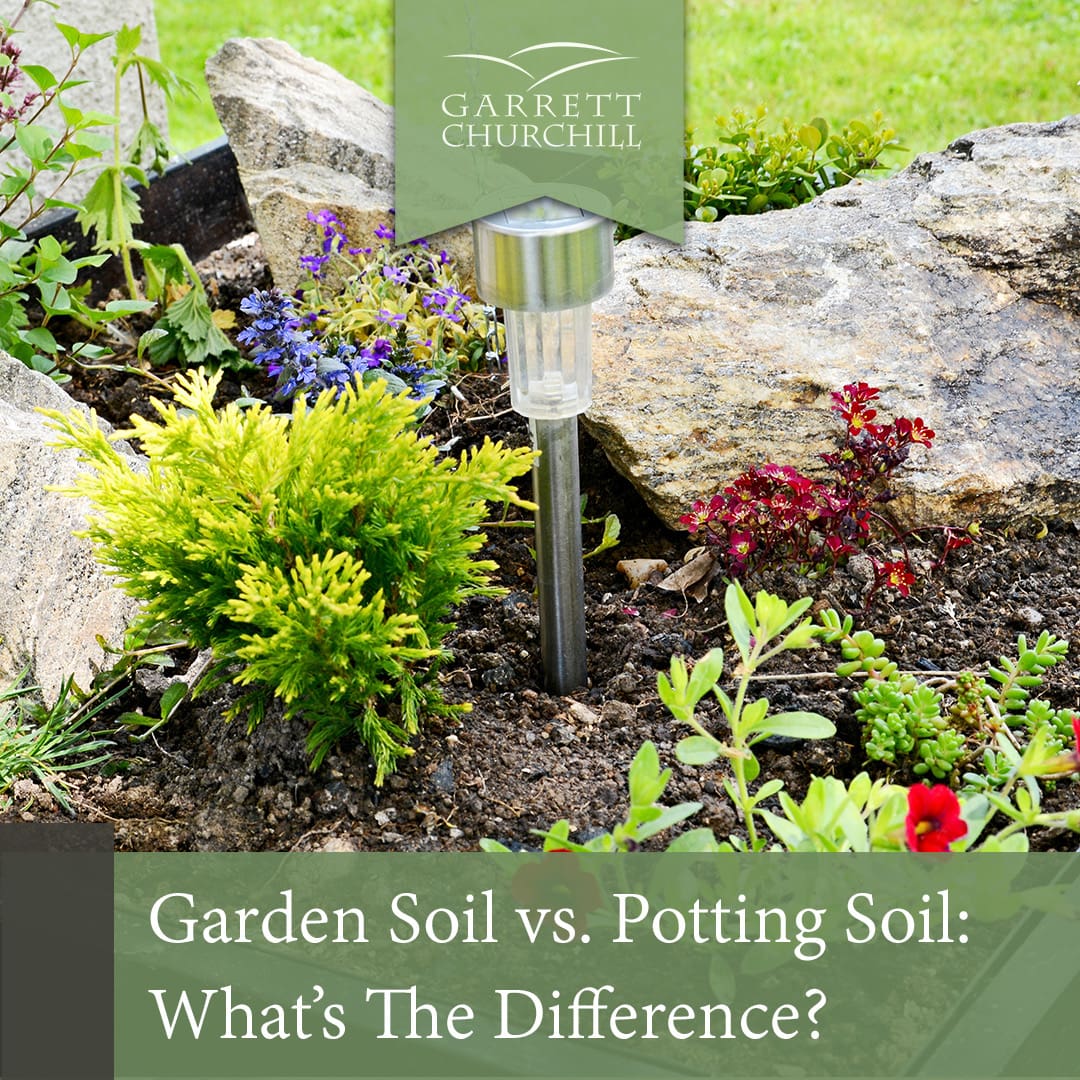Garden Soil vs. Potting Soil: What’s the Difference?
With the summer months waning, many homeowners are already thinking about next year’s landscape projects to improve their yards. Whether those plans entail installing much-needed irrigation improvements, planting vibrant flowers, or growing an herb garden, soil health is vital to a successful garden.
So, before you start combing the internet for inspiration to map out your dream outdoor space, it’s important to ensure your soil will produce the thriving plants you envision. Read on to learn which soil will have the best results in your yard.
What is Garden Soil?
Garden soil typically comprises a blend of topsoil with composted bark and animal manure. Because of the bulky, organic material, it has a chunky texture, which helps create a balanced environment for plants to thrive.
If your existing dirt is too compact, garden soil can loosen its consistency. If your dirt is sandy and dry, it can help it maintain moisture.
Incorporate garden soil into your garden by mixing three inches of soil with the existing soil. Utilize a tiller for extra help and place plants where you would like them to flourish – but be cautious, as it can add 15-20% more volume, potentially resulting in the need for removal to avoid building the grade up too high against the house.
Note: We recommend incorporating compost (either leaf mulch or mushroom compost) into existing soil without adding more soil unless it is called for, this way you don’t get too much volume.
Advantages of Garden Soil
Garden soil is much more affordable than potting soil since it is not as rich in organic materials.
The unique, chunky texture of garden soil can help:
- Build stronger plant roots
- Improve compacted soil and drainage issues inherent in the native soil
- Increase the moisture-retaining abilities of sandy-textured dirt
Disadvantages of Garden Soil
Because of its bulk, garden soil is ideal for a garden environment and should not be used as a base for potted plants.
Be mindful that garden soil:
- Lacks certain nutrients, so they may have to be added to the soil
- May not address underlying soil PH issues
- Can harbor insect eggs
- May add unnecessary volume to the bed
What is Potting Soil?
Potting soil, also known as potting mix, may contain ingredients such as compost, peat, bark, perlite, and vermiculite. These materials are necessary because most soil lacks a combination of nitrogen, phosphorus, or potassium. By utilizing nutrient-dense potting soil, you give your plants a better chance of achieving their full potential.
We recommend that you always review ingredients to determine which option is best for your specific pottedplants. Be mindful that many manufacturers add a “starter charge” fertilizer, which means you won’t need to fertilize for a period of time. Be sure to read and follow instructions for the best results.
Advantages of Potting Soil
While potting soil is specifically mixed for potting purposes, it is an option for low spots in a raised bed.
Many gardeners routinely buy potting soil because it:
- Provides a fluffy, lightweight texture that is packed with the nutrients plants need
- Packs well around plants, which helps ensure they have the proper support to stand upright
- Comes in a wide variety of mixes that are customized for specific plants
- Contains moisture-retaining “hydrogels” that improve moisture retention and cut down on watering
Disadvantages of Potting Soil
When adding potting soil to your planters, we recommend you:
- Wear gloves and avoid inhaling potting soil, as it may harbor harmful bacteria
- Monitor water levels closely. The moisture-retaining gel packs can make it easy to overwater
- Keep an eye on your budget. Potting soil can be expensive in large quantities
Choose the Right Soil for Your Project
While they do have their differences, potting soil and garden soil are versatile, nutrient-rich, and readily available at your local gardening store.
Be mindful of these key points of distinction before you stock up:
- Potting soil can be added to pots straight from the bag, whereas you may need to add nutrients to garden soil before use.
- Garden soil contains live microbes that are beneficial to your plants. Potting soils have been sterilized and do not contain these microbes.
- Potting soil will require less water and upkeep because of the absorbent hydrogels.
Speak with an Expert About Your Planting Needs
Much like a well-built home rests on a solid foundation, a beautiful garden begins with the right mixture of organic matter and nutrients.
Book an on-site consultation and soil analysis to maximize your soil health and functionality at http://garrettchurchill.local/get-a-quote
